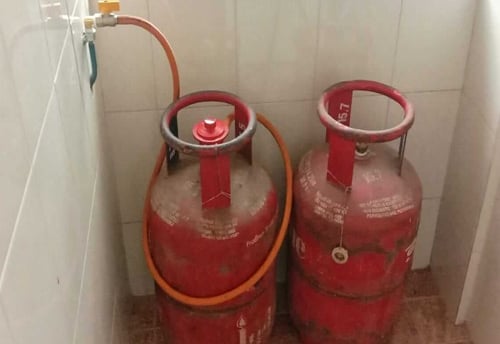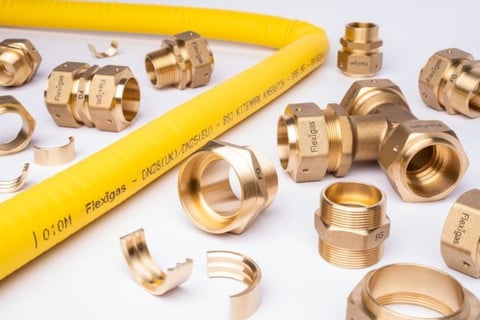How to Handle Gas Pipeline Installation in Older Homes
Installing a gas pipeline in an older property can present unique challenges that require special attention to ensure safety, efficiency, and compliance with local regulations.
11/7/20245 min read


A Guide for Homeowners and Installers
Gas pipelines are essential for providing a reliable source of energy in homes, powering everything from heating systems to kitchen stoves. When it comes to gas pipeline installation there are many considerations, especially when working with older homes. Installing a gas pipeline in an older property can present unique challenges that require special attention to ensure safety, efficiency, and compliance with local regulations.
In this blog, we’ll explore the essential steps and best practices for handling gas pipeline installation in older homes. Whether you're a homeowner planning to upgrade your home's energy system or an installer working on a historic property in Hyderabad, here’s what you need to know.
1. Assess the Current Infrastructure
Before starting the installation of a new gas pipeline, it’s crucial to evaluate the current infrastructure. In older homes, the existing plumbing, electrical systems, and gas lines might not be up to current standards. A thorough assessment can help identify potential issues, such as outdated pipes or gas leaks, that may need to be addressed before installing new systems.
Pipe Material Inspection: Older homes may have pipes made of materials like cast iron, lead, or galvanized steel. These materials can corrode over time, posing safety risks. During the gas pipeline installation in Hyderabad, replacing these old pipes with modern, durable materials like copper or PEX (cross-linked polyethylene) is recommended.
Gas Meter Location: The location of the gas meter in an older home may not be optimal for new installations. It’s essential to check that the gas meter can be safely accessed and that the pipeline layout meets local building codes and safety regulations.
2. Consult a Professional Installer
Gas pipeline installation requires expert knowledge and should always be performed by licensed professionals. In Hyderabad, where gas infrastructure is rapidly expanding, the demand for experienced installers is high. A certified installer will ensure that the installation is done safely and up to code, following the guidelines of local authorities like the Petroleum and Natural Gas Regulatory Board (PNGRB).
Here’s why professional help is crucial:
Permitting and Compliance: Gas pipeline installation in Hyderabad is regulated by safety codes and city ordinances. Professionals will ensure that all the necessary permits are obtained and that the installation complies with local regulations.
Safety Checks: Installers will conduct necessary safety checks, including testing the system for leaks and ensuring there is proper ventilation for gas appliances.
3. Evaluate the Layout of the House
Older homes often have a more complex floor plan, with rooms and walls that may not easily accommodate the layout of modern gas pipelines. It’s essential to evaluate the structure of the home and plan the route for the gas line carefully. This involves:
Mapping the Pipeline Path: The gas pipeline must follow the most direct and safest path from the gas meter to appliances. In older homes with narrow crawl spaces or irregular layouts, this path may need to be adjusted to avoid structural obstacles.
Accessing Hidden Spaces: Older homes may have attics, basements, or walls that are more challenging to access than newer homes. Proper planning ensures that the gas lines are routed safely without unnecessary drilling or damage to the home’s structure.
4. Addressing Safety Concerns
Safety is the top priority when installing gas pipelines, particularly in older homes. The risk of gas leaks or accidents is higher in homes with outdated systems or those that have undergone previous renovations. Here’s how you can address potential safety concerns during gas pipeline installation :
Gas Leak Detection: Before installing new gas lines, the home should be tested for existing gas leaks. If any leaks are found in old lines or appliances, they must be repaired or replaced before proceeding with the installation.
Proper Ventilation: Older homes may lack adequate ventilation systems for gas appliances. It’s important to ensure that each appliance is properly ventilated to prevent dangerous gas buildup, which could lead to carbon monoxide poisoning.
Upgrading the Gas Meter: In some cases, the existing gas meter may need to be upgraded to handle the new gas load in the home. This ensures that the system can safely accommodate the gas usage of modern appliances.
5. Use of Modern Materials and Techniques
When handling gas pipeline installation in older homes, it’s important to use modern materials and techniques that offer better safety, efficiency, and durability compared to older systems.
Flexible Piping (PEX): Modern PEX piping is more durable and easier to install than older metal pipes. PEX is resistant to corrosion, making it ideal for older homes, and can be routed through walls or ceilings with fewer fittings, reducing the risk of leaks.
Copper Pipes: Copper pipes are another popular option for gas pipeline installation. They are highly durable, corrosion-resistant, and capable of withstanding high pressure, making them ideal for residential gas lines.
6. Regulatory Compliance and Documentation
Compliance with local regulations and obtaining the necessary permits is essential when installing gas pipelines. In Hyderabad, all gas installations must meet safety and environmental standards to prevent accidents and ensure public safety.
Obtain Permits: Make sure to apply for the necessary permits before starting any installation work. This includes submitting plans for the gas line layout, pipeline route, and appliance connections.
Inspection and Certification: After installation, the gas system must be inspected and certified by a qualified inspector to ensure it meets local safety codes. This may include checking for leaks, confirming the correct installation of appliances, and testing the pressure of the gas line.
7. Ongoing Maintenance and Monitoring
Once the gas pipeline installation is complete, regular maintenance is key to ensuring the system operates safely and efficiently. Homeowners should:
Schedule Regular Inspections: Periodic inspections by professionals can detect potential issues like gas leaks or corroded pipes before they become major problems.
Monitor Gas Appliances: Ensure that gas appliances, such as stoves and water heaters, are functioning correctly and are regularly serviced to avoid wear and tear on the pipeline system.
Conclusion
Gas pipeline installation in older homes requires careful planning, expertise, and attention to safety. Whether you’re upgrading your home in Hyderabad or installing a gas line for the first time, it’s crucial to work with certified professionals who understand the challenges of older structures. By assessing the current infrastructure, using modern materials, addressing safety concerns, and ensuring compliance with local regulations, you can ensure a safe and efficient gas pipeline system in your home.
With proper planning and execution, you’ll enjoy the reliability and convenience of natural gas, all while keeping your home safe and up to modern standards.




Contact US Today:
Email: info@vaultgaspipeline.site
Phone:
+91 8522 09 2525
+91 95155 92020


Quick Links:
Services
Our Process
Why Choose us
Contact us
Our Services:
Gas Pipeline Installation
Gas Pipeline Maintenance
